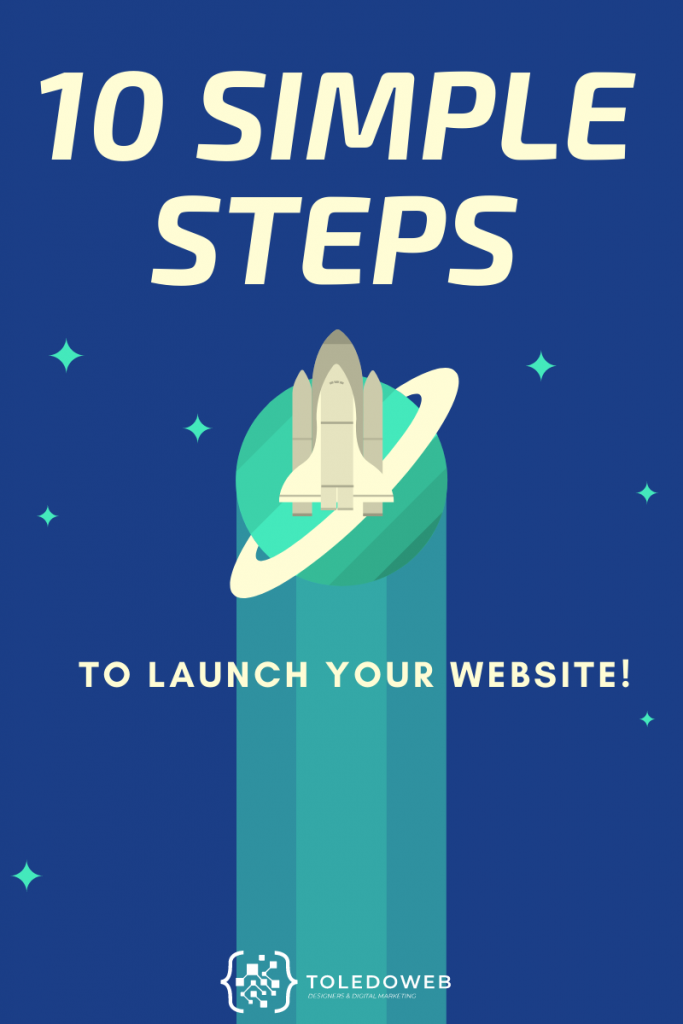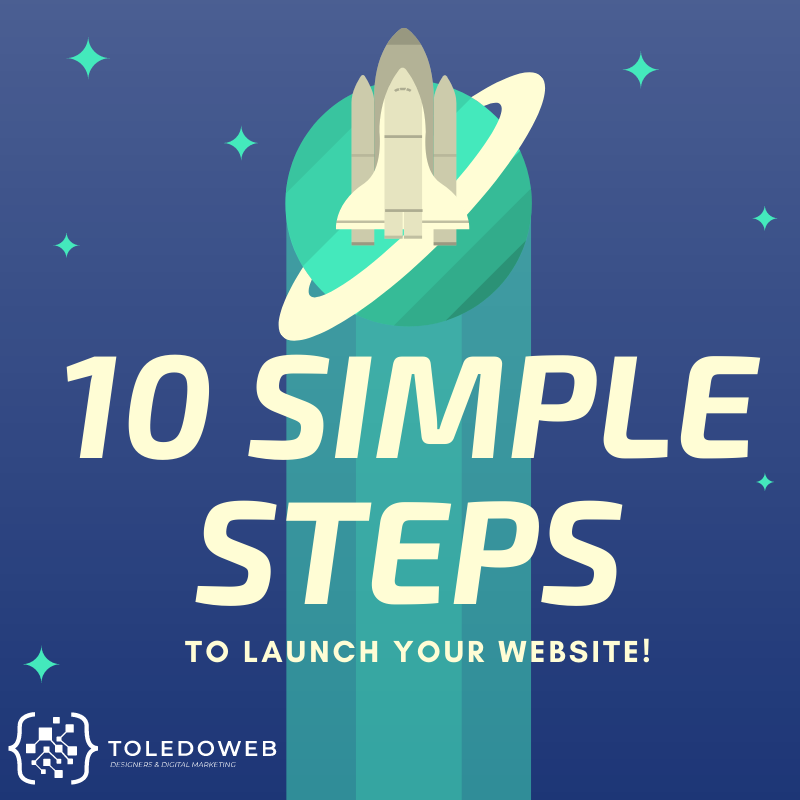Your website is a crucial element in your small business’s success, but are you leveraging it to its maximum performance? Do you wonder how to even start getting your business online if you do not have a website yet? Could your website’s design and SEO be improved? Could you optimize the user experience to boost your conversion rates? There are many questions to answer and strategies to develop when getting your business a home in the online world.
10 Steps to Lunch Website – A Must-Have Checklist for Small Business
Read on for 10 Steps to Lunch Website for small business that will help you unlock your website’s full potential.

1. Get a Good Domain Name
As basic as it may seem, this is a critical step. You want a domain name people will easily remember that will help your SEO (search engine optimization). To that end, your domain name needs to be:
- As short as possible
- Easy to spell
- Easy to remember
Good domain names are in short supply, so if you find one that suits your needs and is unattached, grab it right away. If possible, always use the .com extension and avoid hyphens and numbers in the domain.
2. Choose the Best Content Management System
WordPress tops the popularity list of content management systems (CMSs). It is simple to implement, flexible, doesn’t require much technical knowledge to use, and comes with a multitude of useful plugins.
One big drawback of WordPress is security – WordPress websites tend to become a target for hackers more often. Nevertheless, nothing beats the streamlined and user-friendly WordPress experience for the first-time website owner.
Other popular content management systems include Drupal, Joomla, Squarespace, and Wix.
3. Get Good Web Hosting
A web host, or website hosting provider, is the company that makes your website viewable to users. Your host connects your domain name to the website itself.
You can get a hosting plan for as little as $2 a month, but that’s not recommended, because such cheap hosting means you are getting a shared server plan – sharing a server with other customers, which may impair your website’s performance.
Our recommendation after trying many different options and many different price points always come back to Siteground! (Disclosure, this does include an affiliate link belonging to our talented web developer.)
4. Make Your Business Description Clear
No matter where your potential customers happen to land on your website, you want them to know at a glance who you are and what you are offering.
Feature a header and footer blurb on each page and make the footer navigation menu clear and easily accessible. Also, make sure your home page banner and other banners include clear images of your products or services.
5. Optimize Your Website for Mobile
Did you know that half of all internet traffic operates through mobile devices? This means you should optimize your website for mobile to retain the maximum number of customers and increase conversion rates.
Furthermore, a mobile-optimized website performs better in SEO terms, as Google crawler bots now operate on a mobile-first basis as they index your website.
Here are some tips on optimizing websites for mobile:
- Make buttons large so that users can find and tap them more easily.
- Place buttons in the middle of the screen for convenience.
- Make sure your mobile website loads as quickly as possible.
6. Use Clean, Attractive, and Consistent Design
It may be tempting to cram your website with interesting features and lots of fun elements, but you will provide a better user experience and improve conversion rates if you focus on a few core points and emphasize them.
Here are a few helpful tips for efficient, user-optimized web design:
- Leave enough white space. If you pack your entire page with words, images, and other content, the user’s eye has no room to focus. An uncluttered page with one or two key elements is much better for user engagement and conversion.
- Use plenty of visual content. Graphics, photos, and videos serve to break up a large body of text and keep the website fun and engaging.
- Use consistent design elements. Consistent page design, logos, fonts, and format make your website look professional and aesthetically pleasing.
7. Include a Clear Call-to-Action
Your website’s ultimate purpose is to convert traffic into sales. A clear call-to-action (CTA) on every page helps achieve that by nudging the user in the direction you want them to take.
A CTA should be clearly visible, short, and motivating. Here are some examples of good CTAs:
- “Try it now and get a 10% discount coupon.”
- “Click here for a free, no-obligation quote.”
- “Subscribe and get a free e-book.”
8. Improve Website Speed
You can have a perfectly designed website with prime content and a clear, compelling call-to-action, but all of your hard work is for nothing if your page load time is so slow that users get tired of waiting and click away.
A quick-loading website is a must for an optimized user experience. If your loading time is more than 3-5 seconds, you’ll lose over half your users.
You can use a variety of tools to measure your website loading speed. Also, always opt for a speedy, reliable web host and compress your images before uploading them.
9. Consistently Create Fresh, Valuable Content
If your website includes a blog, update it regularly with engaging, useful content. Don’t neglect older pages – keep them updated and relevant and consider adding more attractive visual content such as infographics and videos.
While SEO is important, your primary focus should be on the user, not on Google bots. Don’t just throw in a few keywords – provide content with genuine value and consider merging pages with thin content.
10. Link to Others and Get Others to Link to You
The endorsement in the form of links by other relevant and trustworthy websites will improve your SEO and drive traffic to your site. Be collaborative and generously link to content your visitors might find useful.
Are you just starting your small business website? Need some help with web design, SEO, and content marketing? Get effective, results-driven solutions for your small business from Toledo Web Designers & Digital Marketing. We are based in Toledo, Ohio, but serve clients across the US.

